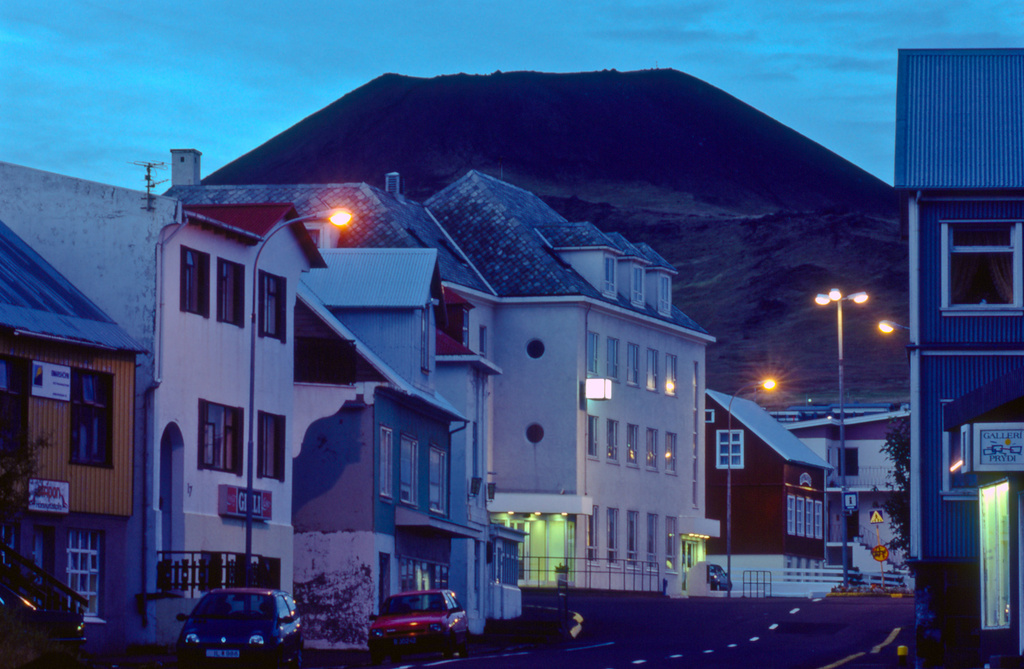Last Roll of Kodachrome Film Processed
PARSONS — Freelance photojournalist Steve McCurry, whose work has graced the pages of National Geographic, laid 36 slides representing the last frames of Kodachrome film on the light board sitting on a counter in Dwayne's Photo Service in Parsons.
He placed a loupe — a magnifier that makes it easier to view film — over one frame and took a closer look at the film.
McCurry told Dwayne's vice president Grant Steinle how he had chosen to shoot the last roll of Kodachrome produced by Eastman Kodak by capturing images around New York.
"Then we went to India, where I photographed a tribe that is actually on the verge of extinction. It's actually disappearing, the same way as Kodachrome," he told Steinle.
Kodak announced last year that it would retire Kodachrome, a brand name of color reversal film it had manufactured since 1935. McCurry, well-known for his 1984 photograph of Sharbat Gula, or the "Afghan Girl," published on the cover of National Geographic magazine, requested from Kodak to shoot the last roll of 36 frames it manufactured.
National Geographic has closely documented the journey of the final roll of Kodachrome manufactured, down to its being processed. Dwayne's is the only photo lab left in the world to handle Kodachrome processing, so National Geographic Television producer Yvonne Russo and National Geographic magazine senior video producer Hans Weise found themselves in Parsons on Monday, along with McCurry, with the final roll of the iconic film of the 20th century.
As a professional freelance photographer, McCurry has used Kodachrome film for 35 years.
"It's definitely the end of an era," he said of Kodachrome. "It has such a wonderful color palette ... a poetic look, not particularly garish or cartoonish, but wonderful, true colors that were vibrant, but true to what you were shooting."
There are definite advantages to digital photography by comparison to film, McCurry said.
Regardless, digital photography is simply not the same.
"I like having something to hold in my hand," McCurry said.
For McCurry, a photographer since 1974 and photojournalist for National Geographic for 30 years, Kodachrome has been a part of his professional career.
Russo said they documented McCurry shooting the final roll of film in New York, then traveling to Bombay and Rajasthan, India, then back to New York, shooting along the way several personalities of the world of filmmaking.
McCurry said he spent about two months shooting the images, which also included scenic photos, as well as serendipitous moments on the streets of New York.
"And I actually shot the last three frames here in Parsons," McCurry said.
As Kodachrome is no longer manufactured, Steinle said that on Dec. 10 Dwayne's Photo will end its processing of Kodachrome.
"All this is going to be discarded," McCurry said of the processing equipment for Kodachrome,"... so it's just a piece of history. It's nostalgic. It's kind of sad. I have about 800,000 Kodachrome images in my lab and these will be the last."
If National Geographic does a spread on the journey of this final roll of Kodachrome, McCurry said it will likely come out in spring 2011 and will consist of only four to six images selected from the roll.
However, Weise said, "The entire 36 frames shot will be sent to the Eastman House in Rochester, New York, where Kodak is based, and live there." The Wichita Eagle

Comments
Post a Comment